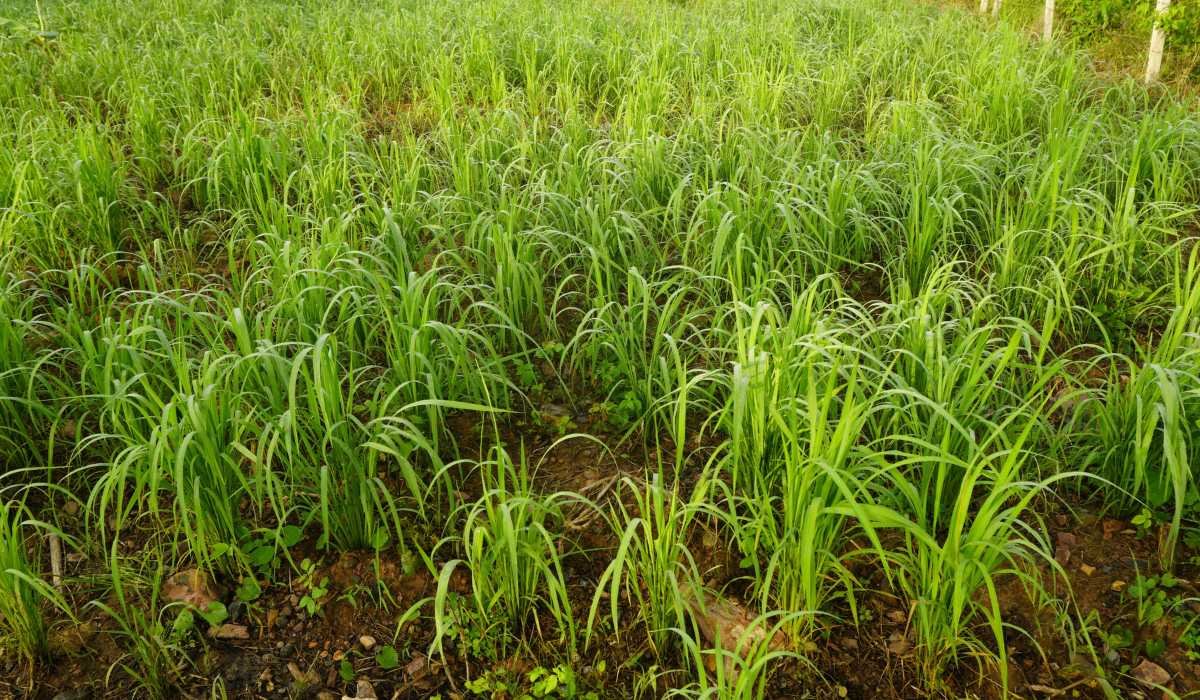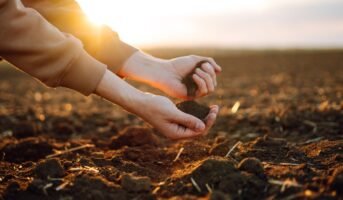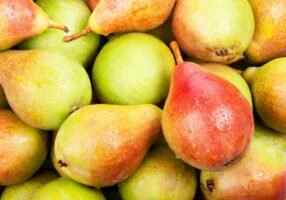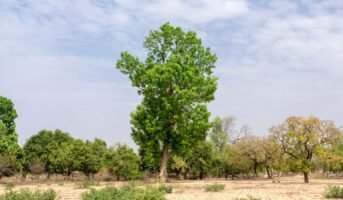The soil is the delicate surface of the planet that holds everything in place. It is one of the most valuable resources since it contains innumerable species that together form a complex and ever-changing ecosystem. Loosened or washed away, the soil particles may then be found in distant countries, seas, rivers, streams, or valleys. Human causes, including farming and cutting down trees, have made this worse.
Rising consumer demand for food and fibre drives the need for more land to be transformed from natural habitats into farmland. Some plants, including coffee, cotton, oil palm, soybeans, and wheat, probably boost soil erosion further than the soil’s capacity to sustain itself, making the transition to farming from wild vegetation typically unsuccessful.
The erosion of soil is a continual cycle that might progress gradually or at a frightening pace. Constant ecological deterioration, soil collapse, etc., are the end effects.
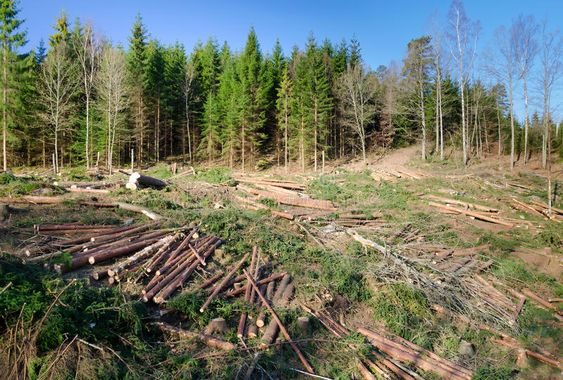
Source: Pinterest
Soil erosion: What is it?

Source: Pinterest
The topsoil on Earth has lost almost 50% of its fertility in the previous 150 years. Erosion isn’t the only factor in agriculture that may degrade soil quality. Compaction, loss of soil structure, nutrient degradation, and soil salinity are only a few of the negative effects. These problems are extremely real and, in some cases, very serious.
In only the previous 150 years, we’ve managed to wipe off half of Earth’s topsoil. Erosion isn’t the only thing that may damage farmland’s soil quality. Soil compaction, structural loss, nutrient depletion, and salinisation are only some of the negative effects of this phenomenon. These problems are extremely real and may be rather serious at times.
Detachment of soil particles, transport, and deposit are the three stages of erosion caused by any agent: water, wind, or tillage. High-quality topsoil is either moved “on-site,” where it accumulates over time, or transported “off-site,” where it clogs drainage systems. Erosion damages not only agricultural land but also pollutes nearby water sources like rivers and lakes.
See also: Tips to grow and take care of anthurium
Soil erosion: Causes
Water from rain and rivers
The possibility of erosion increases with the length and severity of a downpour. Aggregates in the soil may become unstable and dispersed as a result of the impact of raindrops on the soil’s surface. While larger sand and gravel particles require more energy from the raindrops or a greater volume of runoff water to move them, very fine sand, silt, clay, and organic matter are among the lighter aggregate materials that can be quickly swept away by the splash and runoff water of raindrops.
Rainfall results in four different forms of soil erosion: rill erosion, gully erosion, sheet erosion, and splash erosion. The dirt is blown about by the rain, and eventually, it all gets washed away into the adjacent rivers and streams. Soil erosion is a serious problem in areas that get a lot of rainfall. Potholes, rock-cut basins, and other forms of soil erosion are all left in their wake by the torrents of water that rage during floods.
Deforestation

Source: Pinterest
Erosion may develop and cause the soil to be swept into rivers if there is no plant cover. Many of the agricultural plants used to replace trees, such as coffee, cotton, palm oil, soybean, and wheat, are worse for soil erosion since they cannot retain soil. As soil degrades, farmers destroy more forests and perpetuate the cycle.
Wind erosion
Wind erosion, especially in arid and semi-arid regions can lead to land degradation, evaporation, desertification, harmful airborne dust, and crop damage. It is aggravated by activities such as deforestation, agriculture, and urbanisation.
Agriculture
Agricultural activities are the primary culprit in soil degradation. Agriculture causes soil disturbance. New seeds are sown after the ground has been cleared of trees and tilled. Given that most crops are planted in the spring and harvested in the summer, the land is left fallow throughout the winter. During the winter, much of the soil is washed away.
Tillage erosion occurs in cultivated fields owing to the movement of soil by tillage. It leads to soil degradation, leading to significant reduction in crop yield.
Overgrazing
When grasses aren’t kept short enough, wind and rain have less resistance to tearing up and compacting the soil. Because of this, plant growth is stunted, water cannot permeate the soil, and soil microorganisms are damaged, leading to severe erosion.
Construction of mines and logging roads
When logging, a lot of trees have to be felled. The roots of trees anchor the Earth. When it rains hard, the ground is shielded by the tree canopy. During logging, not only are trees felled, but so is the leaf litter that serves as a barrier to soil erosion.
Agricultural chemicals
Farmers have been able to improve their harvests with the use of pesticides and other plant agents. Excessive consumption of some of these chemicals alters soil composition and microbial balance, according to scientists. Because of this, dangerous bacteria flourish while helpful bacteria die off.
Soil erosion: Factors affecting it
- Climate: The amount and intensity of precipitation impacts the soil erosion by water.
- Soil structure and composition: The composition, moisture, and compaction of soil determine the erosivity of rainfall. For example, soil with high levels of organic materials are more resistant to erosion.
- Vegetative cover: Vegetation serves as an interface between the atmosphere and the soil. It increases the permeability of soil to rainwater, thus lowering runoff.
- Topography: The topography determines the velocity at which surface runoff flows, which determines the erosivity of the runoff. Steeper slopes, without adequate vegetative cover, are prone to high rates of soil erosion.
Soil erosion: Impact
Soil erosion is problematic since there is no way to predict how fast or slowly it will happen. Continual weather or climatic occurrences may make it a subtle process that goes undetected. However, fast erosion might be triggered by a severe weather event or another incident, posing serious risks to locals and infrastructure.
-
Less organic and fertile material
The capacity of the land to regenerate new vegetation or crops is diminished when topsoil that is rich in organic matter is removed. Every spot on Earth where crops may be grown is considered arable land. Many of the methods used to cultivate these plants may result in the depletion of topsoil and the destruction of soil features essential to agriculture. To make matters worse, the cycle of declining organic nutrient levels is reinforced whenever new crops or plants are not effectively introduced to the region.
-
Compaction of the soil
Compacted and rigid subsoil decreases water infiltration into deeper layers, maintaining higher discharge and increasing the danger of severe erosion.
-
Global warming
Degraded ground due to erosion may sustain fewer plants, meaning less carbon dioxide (CO2) is removed from the atmosphere, slowing global warming. Soil can absorb enough GHG in a year to counter around 5 percent of the world’s yearly GHG emissions.
-
Lack of proper drainage
When sand is compacted too much, a crust forms on the surface and effectively shuts off the top layer, making it even more difficult for water to penetrate. When rainwater mixes with soil, it creates a muddy sludge that carries with it whatever chemicals and fertilisers were used in the fields. A forest or other natural terrains, such as floodplains or wetlands, may be converted into a crop field or pasture.
-
The acidity of the soil
Growing plants and crops will be severely hindered if the soil’s structure is damaged and the amount of organic matter is drastically decreased.
-
Problems in plant reproduction
New seeds and seedlings are particularly vulnerable to being covered or wiped off by wind when soil erosion occurs in busy agriculture. This has repercussions for agricultural output in the future.
-
Water pollution
Sediment and pollution from things like fertiliser and pesticide usage are key issues with runoff from soils, which are especially problematic when utilised for agricultural activities. Fish and water quality may suffer severely as a result of this.
Soil erosion: Prevention
Soil erosion can be prevented by taking the following steps:
- Reduce soil erosion by planting trees on bare terrain.
- To protect the soil and the vegetation and grass underneath them, use mulch and pebbles.
- Set up a barrier of fibrous logs to stop the erosion of water and soil.
- To stop soil erosion, constructing a fence at the slope’s base is a good idea.
- Mulch matting is useful for preventing soil erosion on slopes.
- Reduce the number of times you till the soil to save more of the valuable topsoil since tilling weakens the soil’s structure.
- Crop rotation is essential for the health and happiness of the land. Soil fertility is increased for subsequent crops as organic matter accumulates.
- It is possible to lessen the likelihood of soil loosening and erosion by constructing terraces or using other techniques of stabilising plant life or even the soil around them. Erosion-vulnerable sites might be fortified with hardy plant life to reduce the likelihood of further damage.
- Water is a major contributor to soil erosion, but prevention of soil erosion is possible by installing specialised chutes and drainage pipes in vulnerable places.
FAQs
How can soil erosion influence soil fertility?
The top layer of soil, which contains a lot of nutrients, is lost due to erosion. This reveals the less fertile, rocky, lower layers, which contain less humus and hence reduce the soil's overall productivity.
What is topsoil?
Topsoil is the layer of soil immediately above the root zone, and it contains a plethora of beneficial organisms, nutrients, and microbial life.
What are the 4 types of soil erosion?
The four types of soil erosion are rain drop or splash erosion, sheet erosion, rill erosion and gully erosion.
Housing News Desk is the news desk of leading online real estate portal, Housing.com. Housing News Desk focuses on a variety of topics such as real estate laws, taxes, current news, property trends, home loans, rentals, décor, green homes, home improvement, etc. The main objective of the news desk, is to cover the real estate sector from the perspective of providing information that is useful to the end-user.
Facebook: https://www.facebook.com/housing.com/
Twitter: https://twitter.com/Housing
Email: [email protected]
